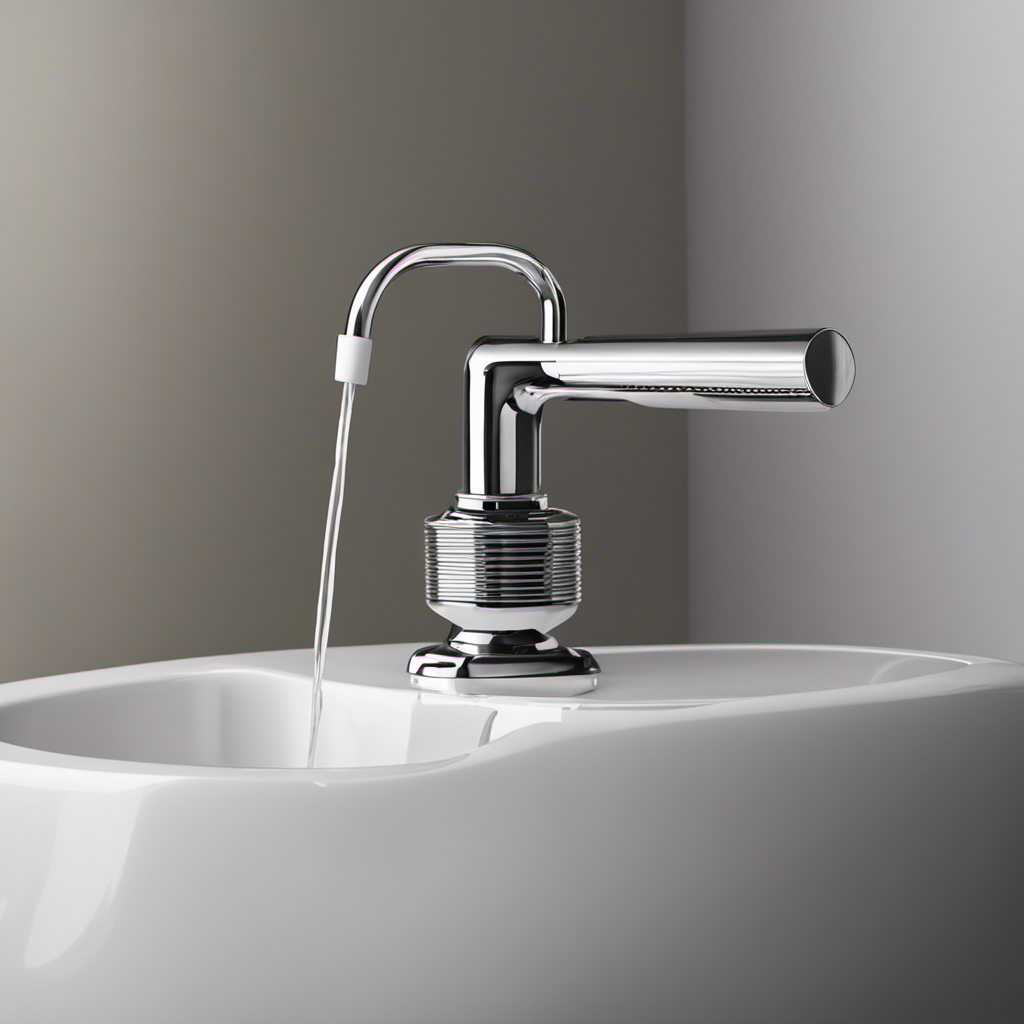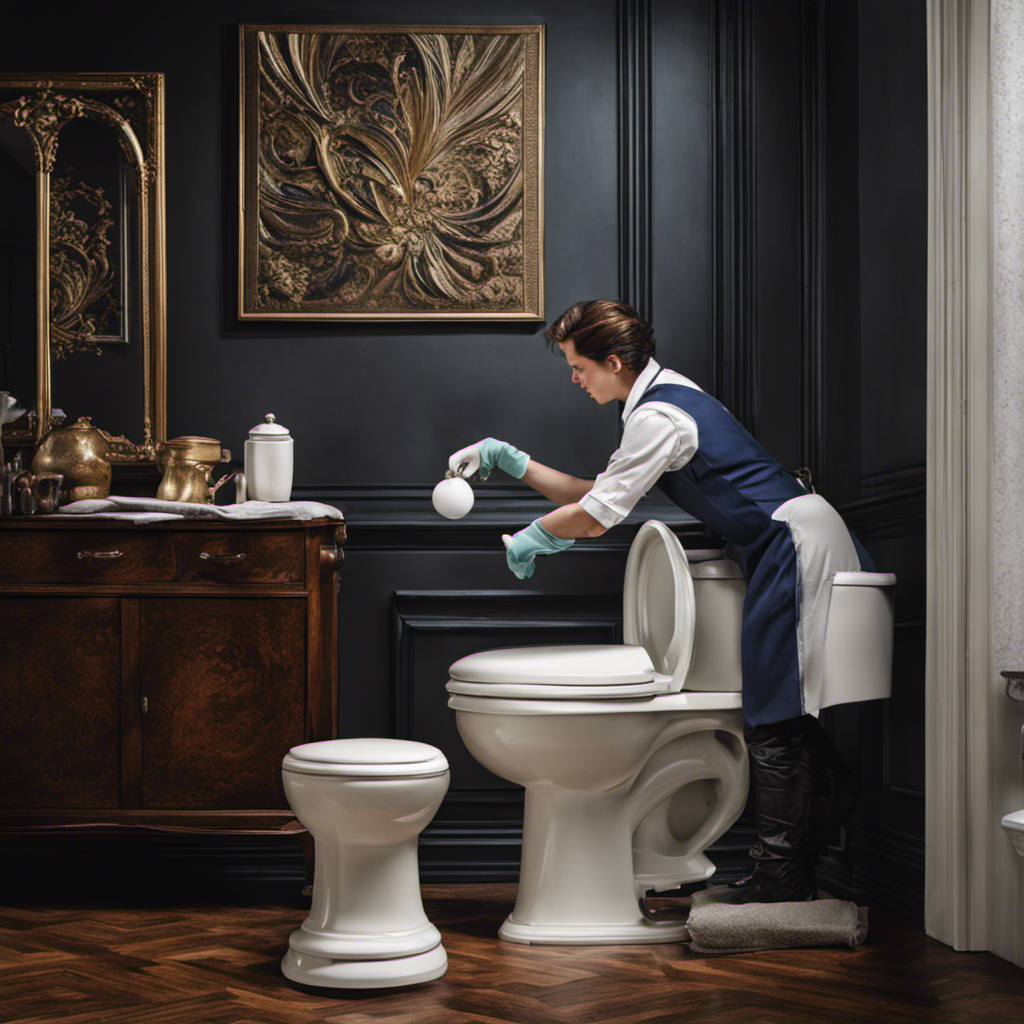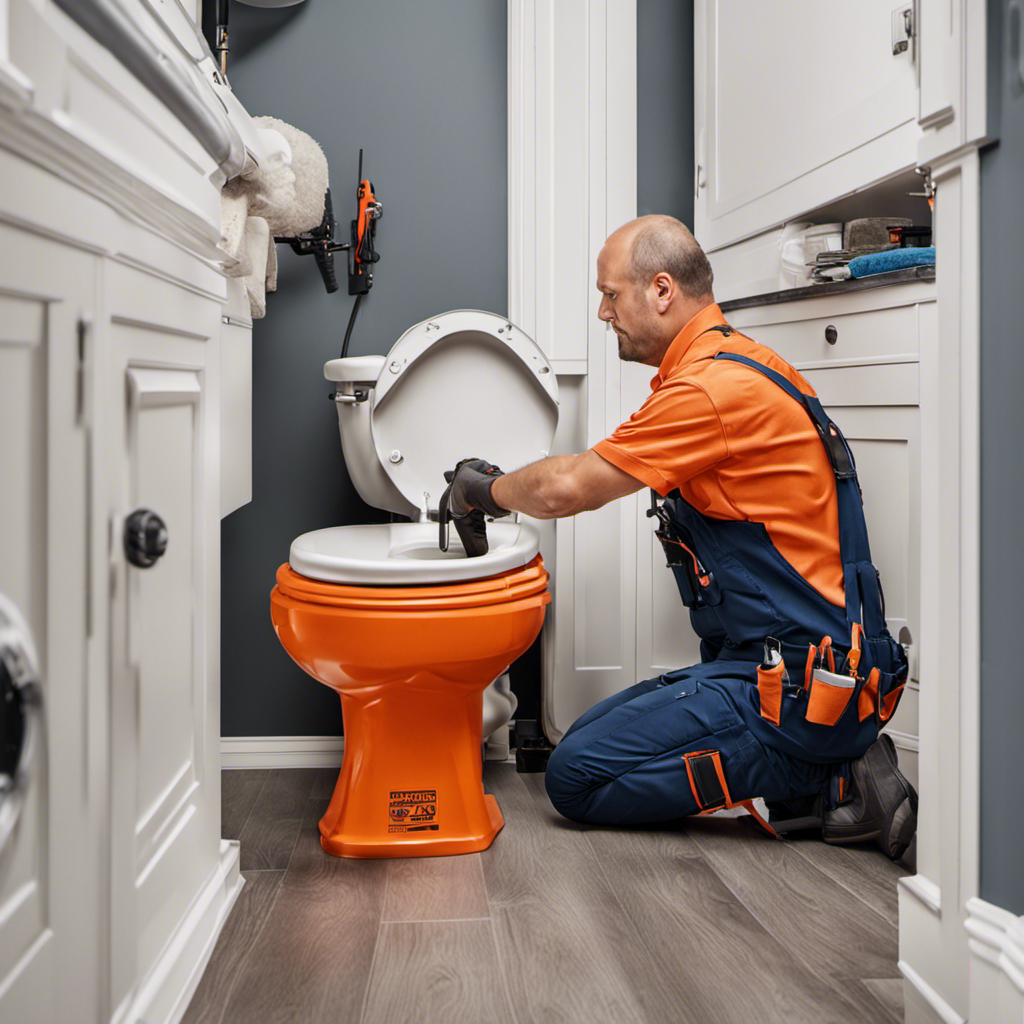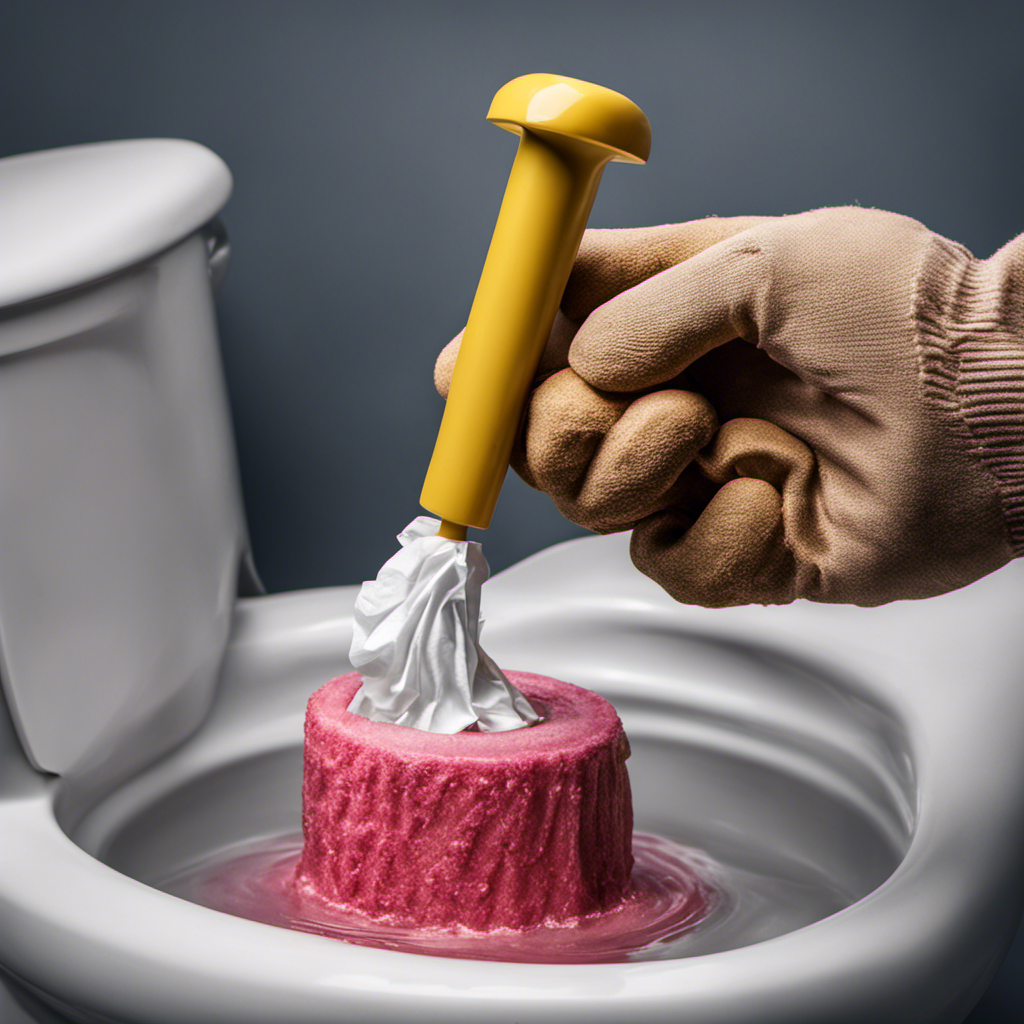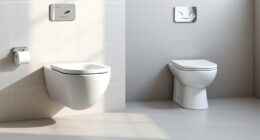Are you tired of the incessant sound of running water in your bathroom? It’s like a leaky faucet that never stops, driving you crazy.
Well, fear not, because in this article, we’re going to show you how to fix that pesky toilet running water. We’ll guide you through the step-by-step process of:
- Identifying the problem
- Checking the flapper valve
- Adjusting the float
- Inspecting the fill valve
- Cleaning the toilet tank
- Replacing the flapper valve if necessary
So, grab your tools and let’s get started on putting an end to that never-ending stream.
Key Takeaways
- Proper identification of the problem is essential for effective repairs.
- DIY repairs can fix most running toilet problems.
- Checking and repairing the flapper valve may be necessary.
- Adjusting the float is crucial for maintaining the water level and conserving water.
Identifying the Problem
First, you need to figure out why your toilet is running. A running toilet can be annoying and wasteful, but it is a common problem that can be fixed with some simple DIY repairs.
There are a few common toilet problems that can cause the water to continuously run. One possibility is a faulty flapper valve, which is responsible for controlling the flow of water into the toilet bowl. Another issue could be a defective fill valve, which regulates the water level in the tank. Additionally, a loose or damaged flush handle can also cause the toilet to run.
Checking the Flapper Valve
To check the flapper valve, you’ll want to start by turning off the water supply to the toilet. This is an essential step to prevent any water from flowing while you work on the valve. Once the water is off, follow these steps:
-
Inspect the flapper valve for any signs of wear or damage. Look for cracks, tears, or warping, as these can prevent the valve from sealing properly.
-
Clean the flapper valve by removing any mineral deposits or debris that may have accumulated over time. Use a soft brush or cloth to gently scrub the valve and ensure it is free from any obstructions.
-
If necessary, adjust the chain length connecting the flapper valve to the flush handle. Make sure there is enough slack for the flapper to fully close, but not so much that it gets tangled or caught.
Adjusting the Float
When it comes to maintaining the optimal water level in your toilet tank, adjusting the float height is crucial. By properly adjusting the float, you can ensure that the water level stays at the desired height, preventing any potential issues like overflowing or running water.
Troubleshooting float issues is also an important part of this process, as it allows you to identify and fix any problems that may arise with the float mechanism.
Float Height Adjustment
Adjusting the float height is crucial to stop your toilet from continuously running. By properly adjusting the float height, you can ensure that the water level in the tank is regulated, preventing any unnecessary water waste. Here are three reasons why float height adjustment is essential for water conservation:
-
Preventing overflow: When the float is set too high, it can cause the water to constantly flow into the overflow tube, leading to wasteful water usage. By adjusting the float to the correct height, you can prevent overflow and save water.
-
Avoiding constant refills: If the float is set too low, the toilet tank will continuously refill, resulting in unnecessary water usage. By adjusting the float height, you can ensure that the tank only fills to the appropriate level, conserving water.
-
Avoiding float replacement: Improper float height can cause the float to malfunction or wear out prematurely. By regularly adjusting the float height, you can avoid the need for float replacement, saving both water and money.
Water Level Control
The key to controlling the water level in your tank is by properly adjusting the float height. This adjustment is crucial in preventing common toilet problems such as running water or a toilet that won’t flush properly. By understanding how to adjust the float height, you can ensure that the water level in your tank is just right.
To adjust the float height, follow these steps:
- Shut off the water supply to the toilet.
- Remove the tank lid and locate the float assembly.
- Adjust the float by bending the float arm or adjusting the screw on the float valve.
- Test the water level by flushing the toilet and observing the water fill up the tank.
- Repeat the adjustment process until the water level is at the desired height.
Troubleshooting Float Issues
If you’re experiencing issues with your float, you can easily troubleshoot and resolve them. Float problems are common and can cause your toilet to continuously run or not fill properly. Here are three common float problems and how to troubleshoot them:
-
Float not rising: Check if the float is getting stuck on something, like the tank wall or the refill tube. Adjust the position of the float or adjust the refill tube to ensure it moves freely.
-
Float not falling: This can happen if the float is tangled with the chain or if the chain is too tight. Untangle the float and chain, and adjust the chain length so that there is enough slack for the float to fall when the water level drops.
-
Float waterlogged: A waterlogged float may not rise properly. If your float is made of plastic, it may be cracked or damaged. In this case, you will need to replace the float with a new one.
Inspecting the Fill Valve
After turning off the water supply, you’ll want to check the fill valve for any issues. The fill valve is responsible for refilling the toilet tank after each flush. If it is not functioning properly, it can lead to a continuously running toilet. To help you troubleshoot the fill valve, here is a table outlining common problems, causes, and solutions:
| Problem | Cause | Solution |
|---|---|---|
| Weak or no water flow | Clogged valve or water supply issue | Clean or replace the fill valve or check water supply line |
| Constant water flow | Faulty valve or improperly adjusted float | Replace the fill valve or adjust the float height |
| Noisy operation | Loose or worn parts | Tighten or replace loose or worn parts |
Cleaning the Toilet Tank
When it comes to cleaning your toilet tank, it’s important to use safe cleaning products that won’t harm the environment or pose a risk to your health.
Additionally, preventing bacterial growth is crucial to maintaining a clean and hygienic toilet.
Finally, removing mineral deposits is necessary to ensure the proper functioning of your toilet and prevent any clogging or damage.
Safe Cleaning Products
Using safe cleaning products is essential to maintain the cleanliness of your toilet and prevent any damage to the plumbing system. When it comes to cleaning your toilet, there are natural alternatives and eco-friendly options that you can use. Here are three reasons why you should consider using these products:
-
Protect your health: Traditional cleaning products often contain harsh chemicals that can irritate your skin, eyes, and respiratory system. By using natural alternatives, you can reduce your exposure to harmful substances and protect your health.
-
Preserve the environment: Chemical-based cleaners can have a negative impact on the environment, as they may contain ingredients that are toxic to aquatic life and contribute to water pollution. Eco-friendly options, on the other hand, are biodegradable and safer for the planet.
-
Extend the lifespan of your toilet: Harsh chemicals can corrode the internal components of your toilet, leading to costly repairs or even the need for a replacement. By opting for safer cleaning products, you can avoid this damage and keep your toilet functioning properly for longer.
Preventing Bacterial Growth
To prevent bacterial growth, it’s important to regularly clean and disinfect your toilet. Bacteria can thrive in the moist and warm environment of a toilet bowl, leading to potential contamination and health risks. Ensuring cleanliness is essential for maintaining a healthy and hygienic bathroom environment. Here are some key steps to prevent bacterial growth in your toilet:
- Clean the toilet bowl thoroughly using a toilet brush and a disinfectant cleaner.
- Pay special attention to the rim, the area under the rim, and the inner sides of the toilet bowl.
- Wipe down the exterior surfaces of the toilet, including the handle, seat, and tank, using a disinfectant spray or wipes.
By regularly following these steps and using appropriate cleaning products, you can effectively prevent bacterial growth and ensure a clean and safe toilet for you and your family.
| Preventing Bacterial Growth | Ensuring Cleanliness |
|---|---|
| – Clean toilet bowl regularly | – Use disinfectant cleaner |
| – Pay attention to all areas | – Wipe down exterior |
| – Use appropriate cleaning | surfaces |
Removing Mineral Deposits
Removing mineral deposits can be challenging, but regular cleaning with vinegar and a scrub brush can help keep your toilet bowl free of stubborn stains. Here are three reasons why using vinegar for cleaning is an effective method for removing hard water stains:
-
Vinegar is a natural and non-toxic cleaner, making it safe to use in your home. This means you don’t have to worry about harsh chemicals that can be harmful to your health.
-
The acetic acid in vinegar helps to dissolve mineral deposits, making it easier to remove those unsightly stains. It breaks down the buildup and leaves your toilet bowl looking clean and fresh.
-
Vinegar is an affordable cleaning solution that you most likely already have in your pantry. It’s a cost-effective way to tackle those stubborn stains without breaking the bank.
By regularly cleaning with vinegar, you can keep your toilet bowl looking pristine and prevent the buildup of mineral deposits.
Now, let’s move on to the next step: replacing the flapper valve.
Replacing the Flapper Valve
The first step in fixing a toilet with running water is checking if the flapper valve needs to be replaced. The flapper valve is a crucial component that controls the flow of water from the tank into the bowl. Over time, it can become worn out or damaged, leading to a constant flow of water. To determine if the flapper valve is the culprit, you can conduct a simple test. Add a few drops of food coloring to the tank water and wait for a few minutes. If the colored water seeps into the bowl without flushing, it indicates that the flapper valve is not sealing properly and needs to be replaced. Here is a table summarizing the steps for flapper valve repair:
| Steps for Flapper Valve Repair |
|---|
| 1. Turn off the water supply to the toilet. |
| 2. Flush the toilet to drain the tank. |
| 3. Remove the old flapper valve. |
| 4. Install the new flapper valve. |
| 5. Turn on the water supply and test the toilet. |
Once you have replaced the flapper valve, you can move on to the next section to learn about calling a professional plumber for more complex toilet issues.
Calling a Professional Plumber
If you’re experiencing persistent issues with your toilet, it may be time to consider calling a professional plumber. While there are DIY alternatives available, hiring professionals has its own benefits. Here are three reasons why it’s worth considering:
-
Expertise: Professional plumbers have the knowledge and experience to accurately diagnose and fix the issue with your toilet. They can quickly identify the root cause of the problem and provide a long-lasting solution.
-
Time-saving: Trying to fix a toilet issue on your own can be time-consuming, especially if you lack experience in plumbing. Hiring a professional plumber allows you to save time and focus on other important tasks.
-
Peace of mind: By hiring a professional, you can have peace of mind knowing that the problem will be fixed correctly. Professionals have the necessary tools and equipment to handle any toilet issue, ensuring a job well done.
While DIY alternatives can be tempting, calling a professional plumber can save you time, provide expertise, and give you peace of mind.
Conclusion
Now that you’ve learned how to fix a running toilet, you are armed with the knowledge to put an end to that annoying sound and wasted water.
With a few simple steps, you can identify and address the problem, whether it’s a faulty flapper valve, an adjustable float, or a dirty fill valve.
By cleaning and replacing the necessary parts, you can easily resolve the issue yourself.
However, if all else fails, don’t hesitate to call a professional plumber who can provide expert assistance.
So go ahead, tackle that running toilet and reclaim your peace and tranquility.
